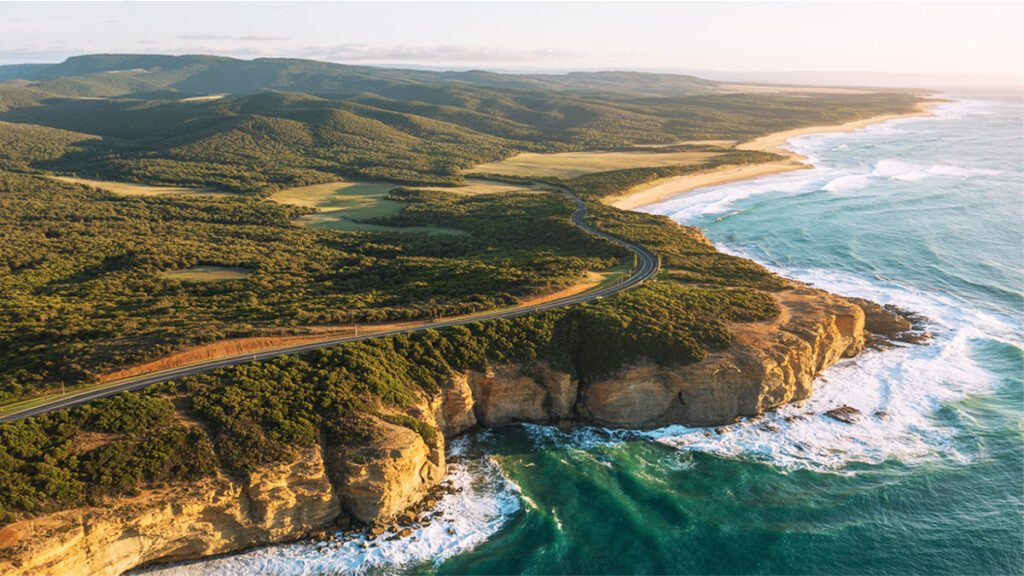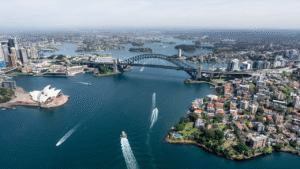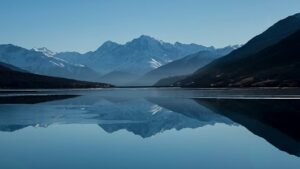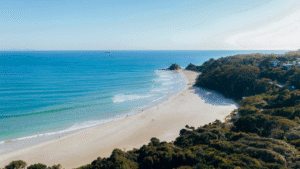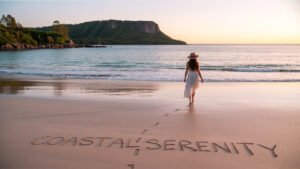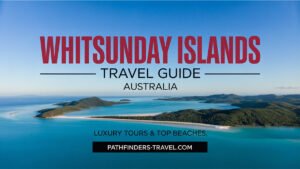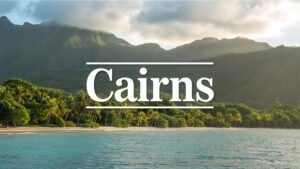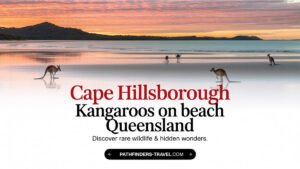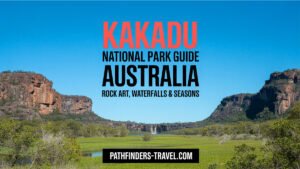Estimated reading time: 18 minutes
Key Takeaways
- The Great Ocean Road spans 243 kilometers along Victoria’s coast, offering stunning coastal views and iconic limestone formations.
- Plan for 3-5 days to properly experience the journey, with October to April being the optimal travel period.
- Must-see attractions include the Twelve Apostles, Loch Ard Gorge, and London Arch, each with unique geological and historical significance.
- Starting from Torquay and ending at Port Campbell or Warrnambool gives you the best experience of this National Heritage-listed route.
- Wildlife spotting opportunities are abundant, particularly at Kennett River where you can see wild koalas in their natural habitat.
Table of Contents
- Introduction
- Overview of the Itinerary and Planning Tips
- Detailed Itinerary Breakdown – Must-See Stops
- 12 Apostles Viewing Guide
- Loch Ard Gorge History
- London Arch on the Great Ocean Road
- Additional Must-See Attractions and Scenic Stops
- Practical Information and Transactional Details
- Frequently Asked Questions about Great Ocean Road Trip
Introduction
The Great Ocean Road stands as one of the world’s most spectacular scenic drives in Victoria, Australia. This winding coastal journey offers travelers an unmatched blend of breathtaking ocean views, lush rainforests, and iconic rock formations. Our great ocean road itinerary provides a complete step-by-step guide to experiencing this National Heritage-listed route that combines adventure with coastal beauty.
Stretching for 243 kilometers along Victoria’s rugged southern coast, the Great Ocean Road was built by returned soldiers between 1919 and 1932, making it the world’s largest war memorial. Today, it stands as a testament to human perseverance and nature’s grandeur, where golden beaches meet dramatic limestone cliffs and ancient rainforests touch the sea. [SOURCE]
Want to see this for yourself? Click here to jump to the video in UHD 4K Resolution.
Overview of the Itinerary and Planning Tips
Best Time to Travel These Scenic Drives in Victoria, Australia
The Great Ocean Road can be traveled year-round, but the optimal time to visit is between October and April when temperatures are mild and days are longer. This period offers the best conditions for enjoying the scenic drives in Victoria, Australia, with fewer crowds during weekdays and shoulder seasons (late October to early December and February to April). [SOURCE]
Duration Required
While some visitors attempt to rush through the Great Ocean Road in a single day, experts recommend 3-5 days to truly absorb the experience. This timeframe allows you to enjoy each major stop without feeling rushed, take short walks, and stay overnight in the charming coastal towns along the route. [SOURCE]
Accommodations
Each major town along the Great Ocean Road offers a range of accommodation options:
- Torquay and Lorne: Beachfront hotels and holiday rentals
- Apollo Bay: Family motels and guesthouses
- Cape Otway: Lighthouse accommodations and forest cabins
- Port Campbell: Boutique B&Bs with easy access to the Twelve Apostles
Booking flexibility is key, especially during peak summer months (December-January) when accommodations fill quickly. Many properties offer free cancellation up to 24-48 hours before arrival. [SOURCE]
Practical Tips
For the best experience when traveling the Great Ocean Road, consider these practical tips:
- Rental Cars: Book a vehicle with good fuel efficiency. The road has many curves and hills, so comfortable handling is important.
- Navigation: Download offline maps before your trip, as mobile reception can be patchy in certain areas.
- Driving Direction: Consider traveling west to east (reverse direction) to avoid crowds and have better parking access at major lookouts.
- Fuel: Fill up in major towns like Torquay, Apollo Bay, or Port Campbell as fuel stations are limited in between.
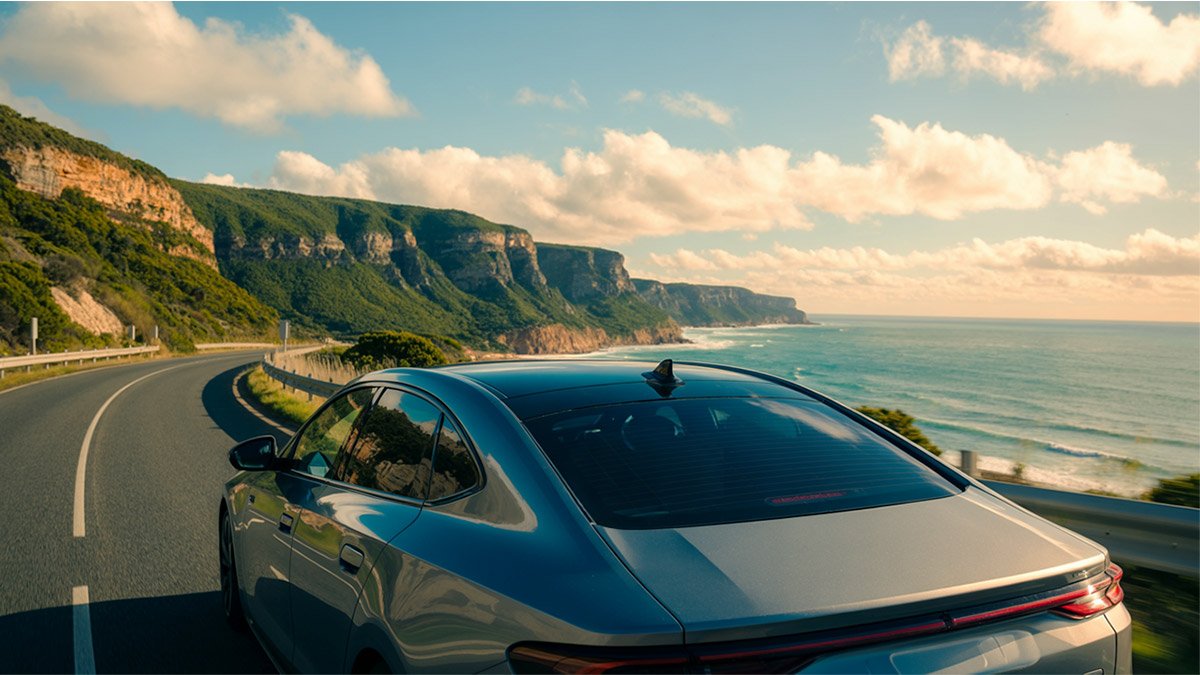
These tips will help you plan a hassle-free journey along one of Melbourne’s most popular day trips, and you can also explore things to do in Sydney if your trip extends beyond Victoria.
. [SOURCE]
Detailed Itinerary Breakdown – Must-See Stops
Day 1: Best Stops on the Great Ocean Road – Beginning the Journey
Your great ocean road itinerary begins in Torquay, the official starting point and surfing capital of Australia. Here’s what to see on your first day:
- Torquay: Visit the Australian National Surfing Museum and Bells Beach, home to the world’s longest-running surfing competition. Grab breakfast at a local café before hitting the road.
- Memorial Arch: Stop at this iconic wooden arch for your first photo opportunity. The arch commemorates the returned soldiers who built the road after World War I.
- Anglesea: Known for its beautiful beach and the chance to spot kangaroos at the golf course. Take a short walk along the Anglesea Cliff Top Walk for stunning coastal views.
- Aireys Inlet: Visit the Split Point Lighthouse, known as the “White Queen,” and enjoy views from the Eagle Rock Marine Sanctuary.
Overnight in Lorne, a vibrant seaside town with plenty of dining options and accommodations — a coastal charm that rivals Byron Bay’s beach lifestyle. [SOURCE]
Day 2: Wildlife and Rainforest Wonders
On your second day, continue west from Lorne to experience more of the best stops on the great ocean road:
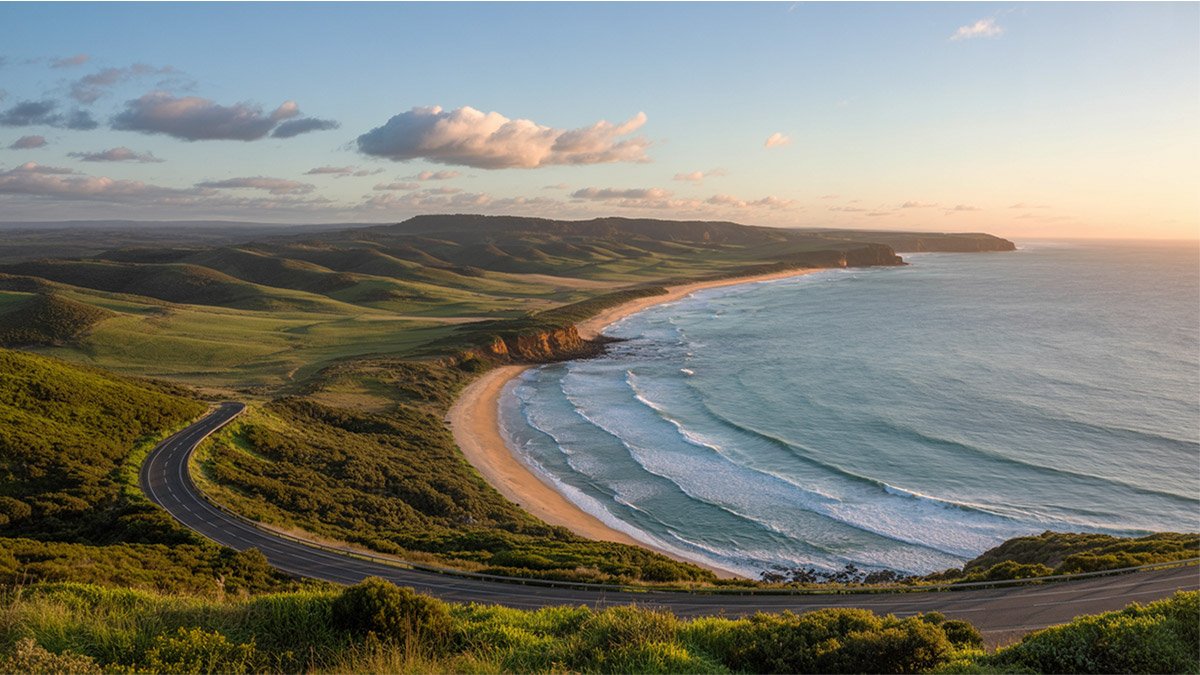
- Lorne: Start your day with breakfast overlooking the sea, then visit Erskine Falls, a 30-meter waterfall just 10 km from town. Don’t miss Teddy’s Lookout for panoramic views of the winding coast.
- Kennett River: This is one of the best spots to see wild koalas in their natural habitat. Drive slowly along Grey River Road and look up into the eucalyptus trees. You might also spot colorful parrots and kookaburras.
- Apollo Bay: Arrive in time for a late lunch at one of the seafood restaurants. Visit the Great Ocean Road Visitor Centre for local information and take a stroll along the harbor.
Stay overnight in Apollo Bay, which offers a range of accommodations from budget to luxury options — much like the stunning nature escapes you’ll find on a Blue Mountains day trip. [SOURCE]
Day 3: Cape Otway and Ancient Forests
Day three takes you deeper into the Great Otway National Park and toward the iconic limestone formations:
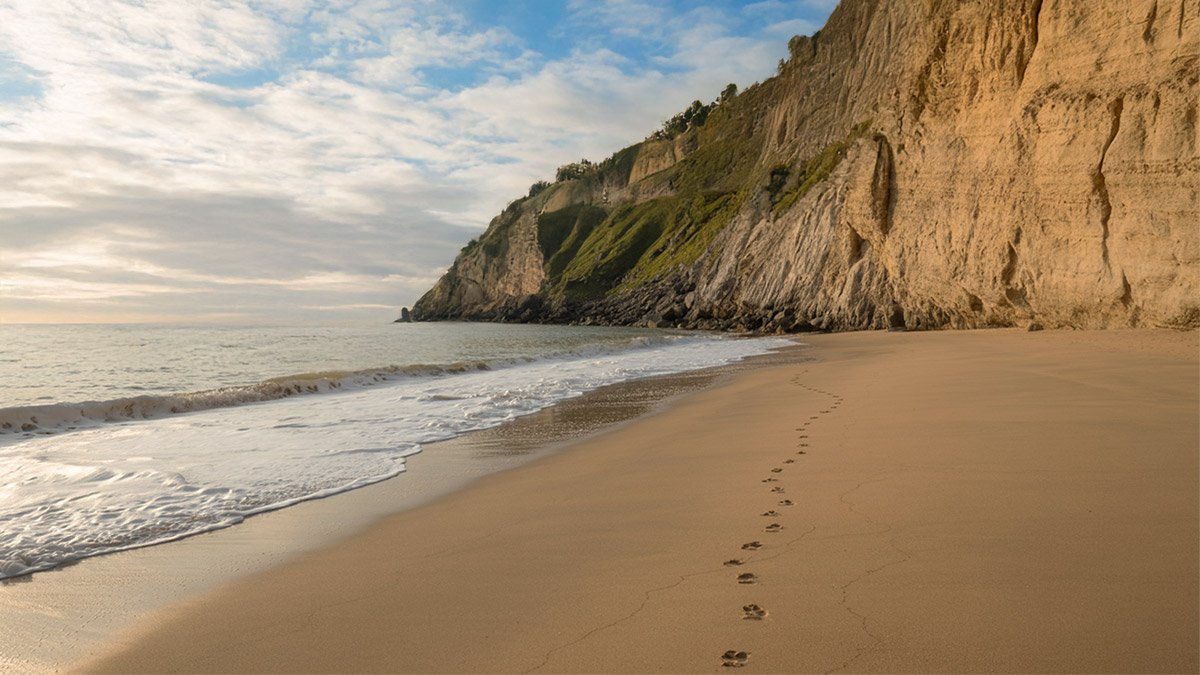
- Maits Rest: Start with a morning walk through this ancient cool temperate rainforest, featuring 300-year-old trees and wooden boardwalks.
- Cape Otway Lightstation: Australia’s oldest surviving lighthouse offers stunning views and fascinating maritime history. Keep an eye out for whales during migration season (June-October).
- Castle Cove: A beautiful, often overlooked beach with impressive geological features and fossil-rich cliffs.
- Lavers Hill: Stop for afternoon tea or coffee at this tiny township nestled in the Otway Ranges.
Continue to Port Campbell for your overnight stay, positioning yourself perfectly for the next day’s exploration of the most famous landmarks — a highlight comparable to the epic journeys in our Norway travel itinerary. [SOURCE]
Day 4: Iconic Limestone Formations
Your fourth day features the most photographed sections of the Great Ocean Road:
- Twelve Apostles: Rise early to see these majestic limestone stacks in the golden morning light, before the crowds arrive. The visitor center provides information and walking paths to multiple viewing platforms.
- Loch Ard Gorge: Just three minutes drive from the Twelve Apostles, this dramatic gorge was named after a shipwreck in 1878. Explore the various walking tracks to the Razorback, Island Arch, and Thunder Cave.
- London Arch: Formerly known as London Bridge until its partial collapse in 1990, this natural arch formation offers a different perspective on the power of ocean erosion.
- The Grotto: A unique formation that’s part blowhole, part archway, and part cave. Steps lead down to this geological wonder.
For those with extra time, continue to Warrnambool to visit Flagstaff Hill Maritime Village or watch whales at Logan’s Beach (May-October). Otherwise, stay another night in Port Campbell or begin your return journey. [SOURCE]
12 Apostles Viewing Guide
Understanding the 12 Apostles Viewing Guide
The 12 Apostles are the crown jewels of the Great Ocean Road, standing majestically against the Southern Ocean backdrop. Despite their name, only eight limestone stacks remain today (there were never actually twelve to begin with), with the ninth having collapsed in 2005. These formations began as limestone cliffs 10-20 million years ago, gradually eroded by the harsh ocean conditions to create the isolated pillars we see today.
The 12 Apostles rise up to 45 meters from the ocean, creating one of Australia’s most photographed natural landmarks. They’re part of the Port Campbell National Park and represent the ongoing process of coastal erosion that continues to shape Victoria’s shoreline. [SOURCE]
Best Viewpoints and Photography Tips
For the best 12 Apostles viewing experience, consider these photography tips:
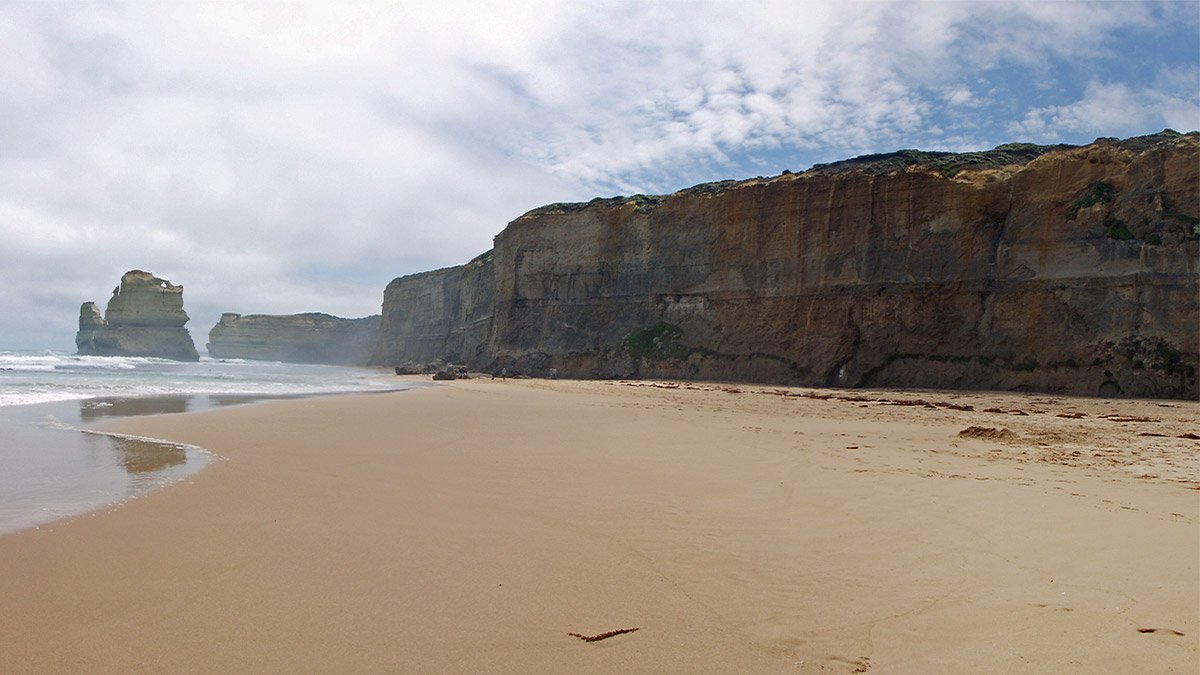
- Main Viewing Platform: Accessible via a tunnel under the Great Ocean Road, this offers the classic postcard view of the formations.
- Timing: Visit at sunrise for soft golden light and fewer crowds. Sunset creates dramatic silhouettes but tends to be more crowded.
- Gibson Steps: Located 1 km east of the main viewing area, these 86 steps lead down to the beach where you can view the apostles from sea level (tide and weather permitting).
- Helicopter Tours: For a truly spectacular perspective, consider a helicopter tour from the nearby helipad. These typically run for 15 minutes and provide unmatched aerial views.
- Weather Considerations: Overcast days can create moody, atmospheric photos, while clear days offer better visibility but harsher contrast.
Bring a wide-angle lens to capture the expansive scenery and a zoom lens to focus on details of individual formations. [SOURCE]
Safety Recommendations
When visiting the 12 Apostles, safety should be your priority:
- Always stay on designated viewing platforms and walking tracks.
- Never climb over safety barriers – the limestone cliffs are unstable and can collapse without warning.
- Be mindful of changing weather conditions, as strong winds and rain are common.
- If visiting at sunrise or sunset, bring a flashlight for the walking paths.
- Wear sturdy footwear and sun protection.
The visitor center provides updated safety information and current conditions. [SOURCE]
Loch Ard Gorge History
The Tragic Loch Ard Gorge History
Just a short drive from the Twelve Apostles, Loch Ard Gorge tells one of Australia’s most compelling shipwreck tales. Named after the clipper ship Loch Ard, which ran aground on nearby Muttonbird Island on June 1, 1878, this picturesque inlet holds a dramatic history beneath its beauty.
The Loch Ard was nearing the end of a three-month journey from England to Melbourne when disaster struck in heavy fog. Of the 54 passengers and crew aboard, only two survived: Tom Pearce, a 19-year-old ship’s apprentice, and Eva Carmichael, a 19-year-old Irish immigrant traveling with her family. Tom managed to swim to shore and then heroically rescued Eva after hearing her cries for help.
Tom sought help from local pastoralists, and while Eva eventually returned to Ireland, never to set foot in Australia again, Tom was celebrated as a hero and continued his maritime career. The gorge’s stunning natural beauty contrasts poignantly with this tale of tragedy and survival. [SOURCE]
Exploring Loch Ard Gorge Today
Today, Loch Ard Gorge is one of the most visited sites along the Great Ocean Road. The area features several walking tracks that allow visitors to explore its geological and historical significance:
- The Shipwreck Walk (1.4 km, 40 minutes): Features signs detailing the Loch Ard disaster and the region’s maritime history.
- The Geology Walk (900 m, 30 minutes): Explains the formation of the gorge and surrounding limestone features.
- Living on the Edge (3.2 km, 1 hour): A longer trail showcasing the changing coastline and diverse flora.
The main gorge itself features a sheltered beach accessible via a staircase. Here, visitors can stand where Tom Pearce found himself after swimming ashore and appreciate the gorge’s towering 30-meter limestone cliffs. Nearby features include the Razorback, Island Arch (which collapsed in 2009), and Tom and Eva Lookout, named after the two survivors.
Facilities at Loch Ard Gorge include a large parking area, restrooms, and information boards. Allow at least 1-2 hours to properly explore the site and its various viewpoints. [SOURCE]
London Arch on the Great Ocean Road
The Evolution of London Arch Great Ocean Road
London Arch, formerly known as London Bridge, is one of the most fascinating geological formations along the Great Ocean Road. Located approximately 7 kilometers west of Port Campbell, this natural limestone arch has a compelling story of transformation.
Until January 15, 1990, the formation was a double-span natural bridge connected to the mainland, resembling London’s famous bridge—hence its original name, London Bridge. However, in a dramatic turn of events, the inner span unexpectedly collapsed that day, leaving the outer span as an isolated arch in the sea.
Most remarkably, when the collapse occurred, two tourists were stranded on the newly formed island and had to be rescued by helicopter. Thankfully, no one was injured during the incident, but it served as a powerful reminder of the coastline’s ever-changing nature and the ongoing process of erosion that shapes these magnificent structures. [SOURCE]
Viewing London Arch Today
Today, London Arch stands as a testament to the dynamic forces of nature along the Great Ocean Road. Visitors can view this impressive formation from two main viewing platforms connected by a walking path.
For the best experience when visiting London Arch:
- Photography: Mid-morning to early afternoon typically offers the best lighting conditions as the sun illuminates the golden limestone.
- Birdwatching: Bring binoculars to spot fairy penguins, mutton birds, and sea eagles that often nest in the area.
- Weather: On stormy days, watch powerful waves crash against the arch, showcasing nature’s ongoing sculpting process.
- Walking Paths: Follow the wheelchair-accessible boardwalk for different perspectives of the formation.
The viewing area for London Arch is less crowded than the Twelve Apostles, offering a more peaceful experience. If you’re creating your own Great Ocean Road trip from Melbourne, this landmark deserves at least 30 minutes for proper appreciation. [SOURCE]
Additional Must-See Attractions and Scenic Stops
Hidden Gems to Enhance Your Great Ocean Road Itinerary
While the Twelve Apostles, Loch Ard Gorge, and London Arch are the stars of any great ocean road itinerary, several lesser-known attractions offer equally memorable experiences. Adding these stops to your journey will create a more comprehensive and rewarding adventure.
Gibson Steps
Located just before the Twelve Apostles, Gibson Steps provide one of the few opportunities to descend to the beach level along this section of coast. The 86 steps, carved into the cliff face, lead to a stunning beach where you can view the towering limestone stacks from below, offering a completely different perspective from the standard viewing platforms above.
Standing on the beach with 70-meter cliffs and giant limestone stacks towering above you creates an awe-inspiring sense of scale that can’t be experienced from the clifftop viewpoints. Check tide times before visiting, as the beach can be inaccessible during high tide or rough weather. [SOURCE]
The Grotto
The Grotto is a unique geological formation that’s part blowhole, part archway, and part cave. Located between London Arch and the Twelve Apostles, this often-overlooked gem offers one of the most photogenic spots along the coast. A staircase leads down to a viewing platform where you can peer through a naturally formed window in the limestone to see the ocean beyond.
The interplay of light, water, and rock creates a magical atmosphere, especially in the late afternoon when the sun’s rays illuminate the interior of the formation. [SOURCE]
Otway Fly Treetop Walk
For a change of scenery from coastal views, venture into the lush rainforest of the Otway Ranges to experience the Otway Fly Treetop Walk. This 600-meter-long, 25-meter-high elevated walkway offers a unique perspective of the ancient rainforest from above the canopy.
The walk includes a 47-meter-tall spiral lookout tower and a cantilever that extends 30 meters out from the main structure, providing spectacular views across the treetops. For adventure seekers, there’s also a zipline tour that takes you soaring through different levels of the forest. This attraction provides a wonderful contrast to the coastal scenery and showcases the diverse ecosystems that make up the Great Ocean Road region. [SOURCE]
Hopetoun Falls
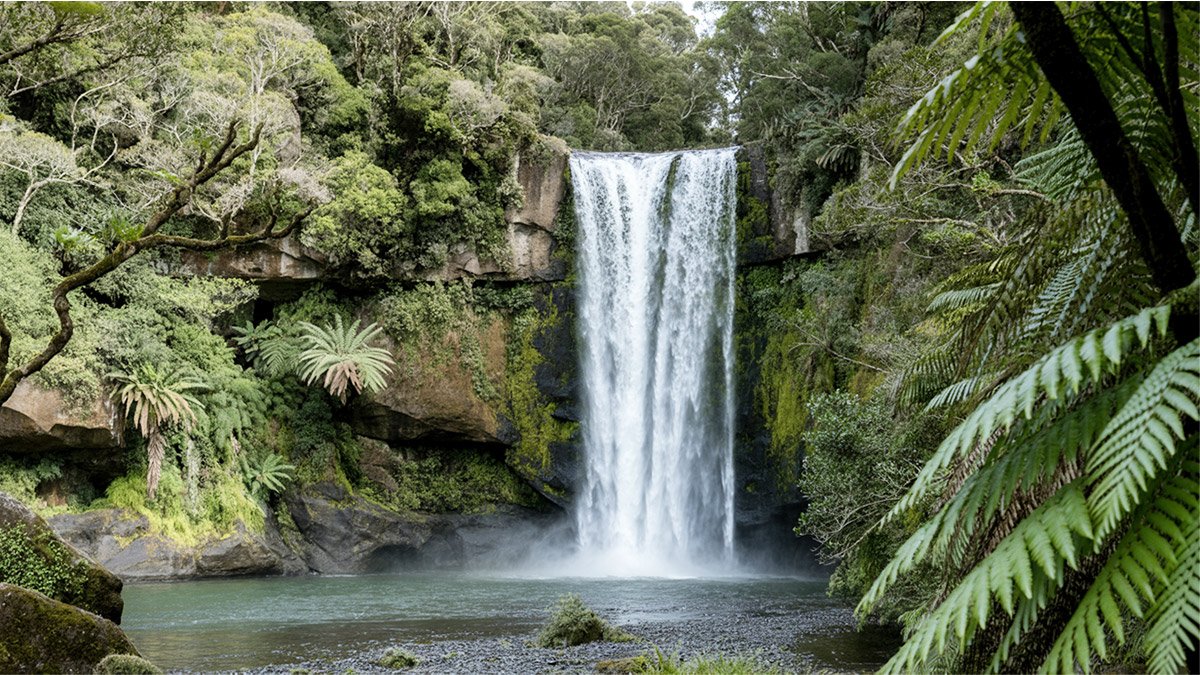
Tucked away in the heart of the Otway Ranges, Hopetoun Falls is a 30-meter waterfall cascading into a lush fern-filled gully. A viewing platform near the parking area offers a glimpse of the falls from above, while a 20-minute return walk takes you down to the base of the falls for a more immersive experience.
The trail is well-maintained but steep in places, winding through beautiful temperate rainforest. The peaceful setting makes this an ideal spot for nature photography or simply taking a moment to connect with the ancient forest environment. [SOURCE]
Bay of Islands
Located west of the Twelve Apostles near Peterborough, the Bay of Islands offers similar limestone formations but with significantly fewer crowds. The multiple viewing platforms showcase a series of limestone stacks scattered throughout a turquoise bay, creating a stunning panorama that rivals its more famous neighbor.
Many travelers consider the Bay of Islands to be equally impressive to the Twelve Apostles, making it a worthwhile addition to your great ocean road itinerary, especially for those seeking a more peaceful experience away from the tour buses. [SOURCE]
Practical Information and Transactional Details
Essential Planning Tools for Scenic Drives in Victoria, Australia
Planning your Great Ocean Road adventure requires attention to practical details that will ensure a smooth and enjoyable journey. Here’s comprehensive information to help with your trip planning:
Navigation and Maps
While the Great Ocean Road is well-signposted, having reliable navigation tools is essential:
- Digital Maps: Download offline maps via Google Maps or Maps.me before your trip, as cellular service can be unreliable in some coastal and rainforest areas.
- Physical Maps: Visitor Information Centers in Torquay, Lorne, and Apollo Bay offer detailed paper maps that mark viewpoints, walks, and facilities.
- Great Ocean Road App: Several free apps provide audio commentary, suggested itineraries, and points of interest along the route.
For those who enjoy organized planning, downloadable itinerary checklists are available online, helping you track your journey and ensure you don’t miss key attractions. [SOURCE]
Cost Breakdown
Understanding the potential costs helps with budgeting for your Great Ocean Road trip:
- Car Rental: AUD $50-120 per day depending on vehicle type and rental duration
- Fuel: Approximately AUD $80-150 for the complete return journey from Melbourne (varies with vehicle type)
- Accommodation:
- Budget (hostels/campsites): AUD $30-60 per night
- Mid-range (motels/B&Bs): AUD $120-180 per night
- Luxury (resorts/premium stays): AUD $200+ per night
- Food:
- Cafés: AUD $15-25 per meal
- Restaurants: AUD $25-40 per meal
- Self-catering: AUD $50-80 per day for groceries
- Attractions:
- Most scenic lookouts and national park areas: Free
- Lighthouse tours: AUD $10-20
- Wildlife parks: AUD $15-35
- Specialty experiences (helicopter tours, treetop walks): AUD $40-150
Creating a daily budget of AUD $200-300 per person should cover moderate accommodations, meals, and basic activities. [SOURCE]
Booking Resources
Make the most of your trip with these booking resources:
- Accommodation: Booking platforms like Booking.com, Airbnb, and direct hotel websites offer options along the route. Consider properties with free cancellation for flexibility.
- Car Rentals: Major companies like Hertz, Avis, Budget, and local operators like Apex and East Coast Car Rentals offer competitive rates from Melbourne Airport or city locations.
- Tours: For those preferring not to drive, guided tours range from single-day excursions to multi-day comprehensive experiences.
Frequently Asked Questions about Great Ocean Road Trip
What’s the best time of year to drive the Great Ocean Road for ideal weather and fewer crowds?
The prime time is between October and April when the weather is mild and daylight hours are longer—perfect for scenic drives. For fewer crowds, consider shoulder seasons like late October to early December or February to April.
How many days should I allow to properly explore the Great Ocean Road?
To fully appreciate the journey and all its major and hidden stops without rushing, plan for 3–5 days. This allows time for leisurely stops, short hikes, and overnight stays in key towns along the way.
What are the must-see highlights along the Great Ocean Road?
Don’t miss iconic limestone formations like the Twelve Apostles, Loch Ard Gorge, and London Arch. For hidden gems beyond the main attractions, check out Gibson Steps, The Grotto, Otway Fly Treetop Walk, Bay of Islands, and waterfalls like Erskine or Hopetoun Falls. If you love discovering hidden places, see our guides to Ontario’s hidden gems and Canada’s unseen treasures.
How should I plan logistics like driving direction, stops, and accommodation?
Start in Torquay and make your way west toward Port Campbell or Warrnambool. Notable overnight towns include Lorne, Apollo Bay, and Port Campbell. Skip driving during nighttime, fill up fuel in major towns, and download offline maps to navigate areas with patchy reception.
What costs should I budget for when planning a Great Ocean Road trip?
Daily costs vary: car rental typically ranges from AUD 50–120, fuel for the return trip around AUD 80–150, and accommodation from hostels (AUD 30–60), mid-range B&Bs (AUD 120–180), to luxury stays (AUD 200+). Plan for around AUD 200–300 per person per day to cover mid-level lodging, meals, and basic sightseeing.

